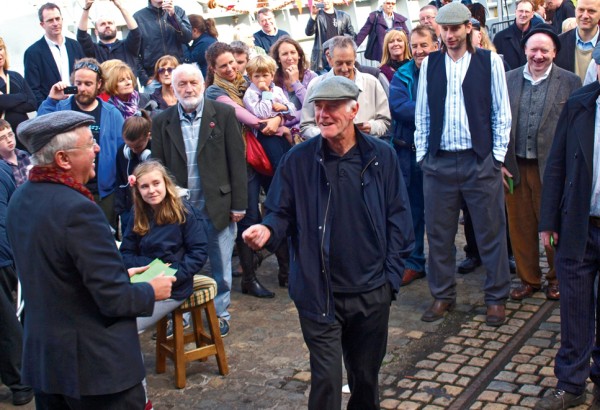
Late in the morning of October 5th this year, a Dockside commemoration took place celebrating international solidarity in times of need.
One hundred years previous to the day, the cargo ship SS Hare delivered the first batch of food parcels to impoverished families of locked-out workers. NewsFour spoke with Declan Byrne, of the Dublin Dockers Preservation Society, who was present along with fellow members, local historians and trade union members.
Declan first sought to clarify that the Dockers Society were invited to take part by the organisers of the event; the Irish Congress of Trade Unions, SIPTU and the 1913 Lockout Commemoration Committee.
“I would have been aware of the aid supplied by ships like the SS Hare, which just happened to be the first of many sent by the TUC (the British Trade Union Centre), and also through the work of a historian Ann Matthews who forensically examined the history of who fed the workers and their families through the time of the lock out.”
Declan explained that prior to the year of the lock out, there had been as many as a dozen dock workers unions, which would start up, persist for a time and then fold. It was Jim Larkin who counselled that they consolidate. By 1913, a great many dockers were members of the Irish Transport and General Workers Union.
The roots of the gesture of solidarity from the British unions were established prior to the year of the lock out when dockers in Liverpool went on strike. The proximity and regular exchange of labour between Dublin and Liverpool inspired sympathy for the Dublin dockers. By the time the lock out was well-established, Larkin’s intensive networking had created an awareness of, and interest in, conditions in Dublin.
The SS Hare made 11 journeys to Dublin bearing food packages, which could be collected shipside by families of striking workers; the packages were exchangeable by vouchers.
On the day of the commemoration, six present-day dock workers were allowed on board the ship (“only six for insurance purposes,” Declan adds) and they distributed the 11 parcels signifying the 11 journeys. After this, a dockers read was performed.
“The bundy was the slang word for it at the time, probably named after the platform the foreman would stand on when he was calling the names.” The read is a call for available workers. Traditionally, dock workers were casual labourers, a day-for-pay types. Registered names would be called and if they were present, the given labourer would work that day.
During the re-enactment of this particular hallowed tradition, some wit was heard to call “He’s away on a message!” in response to certain names, which normally meant the worker had mitched off to the pub. The dockers read seems to be rich in such in-jokes.
“Literacy would have been very low, even among the foremen, so people were recognised by sight and given a nickname, normally a sarcastic one; a slow worker would be called Flash, a fella who lost a lot of fights would be called Buckets o’ Blood, that sort of thing.”
As for Declan’s feelings about the day?
“It was a good turnout for an important commemoration, and it was good to see so many from the Dublin Dockers Preservation Society in their Sunday best.”
Dublin Dockers Preservation Society are on Facebook and their photo archive is accessible at:
bluemelon.com/alanmartin
Image of the dockers read courtesy of the Dublin Dockers Preservation Society.
By Rúairí Conneely

